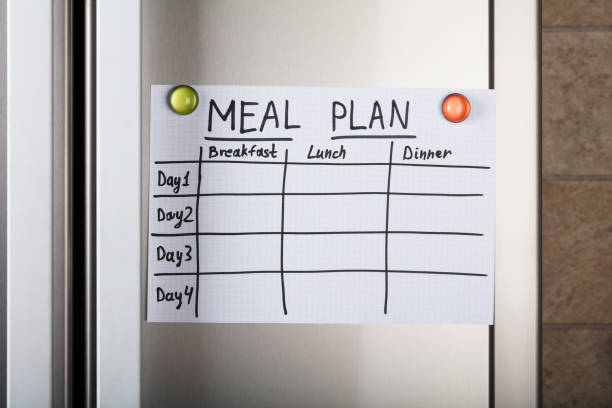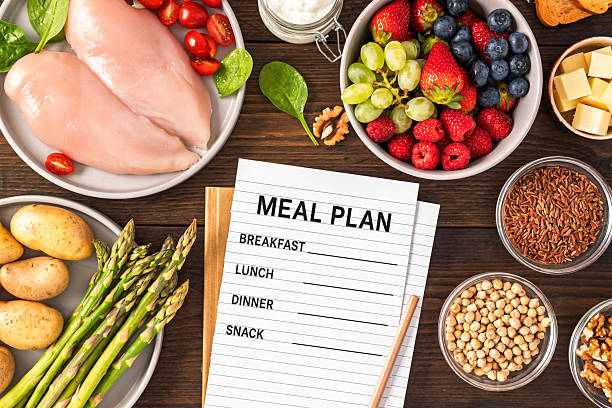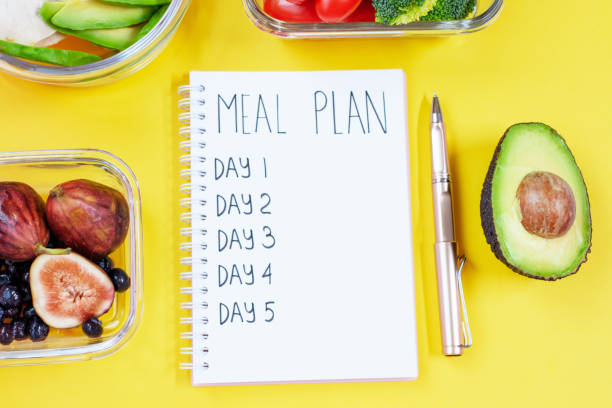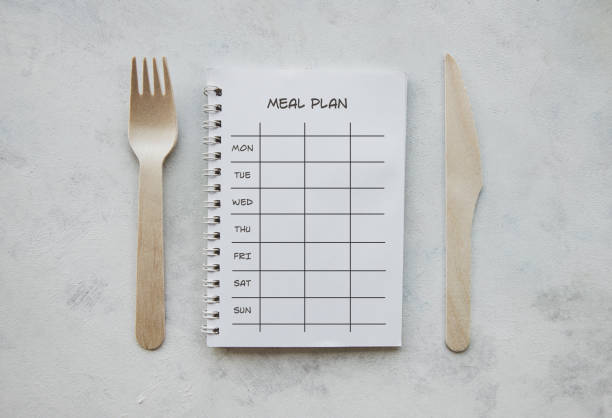Introduction
Meal planning for Type 2 Diabetes doesn’t have to feel hard. With the right weekly guide, you can eat balanced meals, keep blood sugar steady, and enjoy delicious food. You don’t need to give up your favorite flavors or spend hours in the kitchen. This friendly and practical post will walk you through what to eat, how to plan your meals, and simple food swaps that work.
You’ll learn how to build a plate with the right mix of carbs, protein, and fiber—plus easy tips to stay on track all week. Whether you’re cooking for one or feeding a family, this guide makes healthy eating simple and doable.
Why Meal Planning Helps with Blood Sugar Control
Keeping blood sugar steady helps prevent highs and lows. This is important for managing Type 2 Diabetes and feeling your best every day. When you plan your meals:
- You eat balanced portions of carbs, protein, and fiber. This keeps your body fueled without causing sudden spikes or drops.
- You avoid impulse snacks that spike blood sugar. Planning ahead means you’re less likely to grab unhealthy foods when you’re hungry.
- You reduce decision stress and stay on track. Knowing what to eat takes the guesswork out of your day.
This helps your energy, mood, and long‑term health. Stable blood sugar can lead to fewer cravings, better sleep, and a lower risk of diabetes related problems.

Key Principles of Meal Planning for Type 2 Diabetes
Balance Carbs, Protein, and Fiber
- Carbs raise blood sugar most. That’s why it’s important to pair them with protein and fiber to slow down how fast sugar enters your bloodstream.
- Aim for whole grains, legumes, lean meats, and vegetables. These foods give your body steady energy and help you avoid sugar spikes and crashes.
- Fiber helps you feel full and supports gut health. It also helps control blood sugar by slowing digestion and keeping things moving smoothly in your system. Eating more fiber-rich foods can also support heart health and weight control.
Choose Low Glycemic Index Foods
Low GI foods raise blood sugar slowly. These foods help you avoid spikes and give you longer-lasting energy. Good options include:
- Oats, barley, sweet potatoes – These are healthy carbs that digest slowly and keep you full longer.
- Beans, lentils – Packed with fiber and protein, they help manage blood sugar and support digestion.
- Non‑starchy veggies like broccoli, leafy greens – These are low in carbs and high in nutrients, making them perfect for blood sugar control.
Adding more low GI foods to your meals can help you feel better, stay energized, and manage Type 2 Diabetes more easily.
Portion Control Makes a Difference
Use simple tools to guide your portions:
- A fist = ~1 cup vegetables – A great way to fill your plate with fiber, vitamins, and minerals.
- Palm = ~3 oz lean protein – Think chicken, fish, tofu, or eggs. Protein keeps you full and helps balance blood sugar.
- Thumb = ~1–2 tbsp fat (oils, nut butter) – Healthy fats support heart health and help your body absorb nutrients.
Portion control helps maintain a healthy weight and better blood sugar. It also reduces the risk of overeating and helps you feel more in control of your meals.
A Sample Weekly Meal Plan
Here is a sample meal plan you can adapt. Swap meals as you like!
Monday to Wednesday
Monday
- Breakfast: Oatmeal topped with berries and a sprinkle of chia seeds
- Lunch: Turkey and avocado wrap on whole‑grain tortilla, side salad
- Snack: Apple slices + nut butter (almond or peanut)
- Dinner: Baked salmon, quinoa, steamed broccoli
Tuesday
- Breakfast: Greek yogurt with sliced banana and a teaspoon of oats
- Lunch: Lentil soup with whole‑grain crackers
- Snack: Carrot sticks + hummus
- Dinner: Grilled chicken, roasted sweet potatoes, green beans
Wednesday
- Breakfast: Scrambled eggs with spinach and tomato on whole‑grain toast
- Lunch: Chickpea and veggie salad with olive oil dressing
- Snack: A small pear + handful of walnuts
- Dinner: Stir‑fry tofu with mixed vegetables over brown rice
Thursday to Saturday
Thursday
- Breakfast: Smoothie with spinach, berries, protein powder, and water/milk
- Lunch: Quinoa bowl with black beans, corn, peppers, salsa, and avocado
- Snack: Cottage cheese with cucumber slices
- Dinner: Baked cod, roasted Brussels sprouts, side of barley
Friday
- Breakfast: Whole‑grain English muffin with peanut butter and sliced banana
- Lunch: Turkey chili with beans, served over a small scoop of brown rice
- Snack: Sliced bell peppers + tzatziki
- Dinner: Shrimp tacos with cabbage slaw on corn tortillas
Saturday
- Breakfast: Overnight oats with pumpkin puree and cinnamon
- Lunch: Grilled veggie sandwich on whole‑grain bread with pesto
- Snack: Berries + handful of almonds
- Dinner: Lean beef or plant‑based burger on whole‑grain bun, side salad
Sunday: Flexible and Prep Day
Use Sunday to prepare:
- Veggies for salads and snacks
- Cook grains (brown rice, quinoa) in batch
- Portion out nuts, berries, and snack packs
Enjoy a flexible meal (e.g. veggie omelet, simple soup). This prep saves time all week.

Smart Swaps and Tips
Simple swaps can make a big difference for blood sugar and overall health:
- White rice → Brown rice or cauliflower rice – These options have more fiber and cause a slower rise in blood sugar.
- Regular bread → Whole‑grain or sprouted bread – They offer more nutrients and help you feel full longer.
- Sugary drinks → Water, herbal tea, seltzer – These keep you hydrated without adding sugar or empty calories.
- Full‑fat dairy → Low‑fat or plain Greek yogurt – A good source of protein that supports digestion and cuts back on saturated fat.
- Chips or cookies → Roasted chickpeas or air‑popped popcorn – Crunchy, tasty, and lower in added sugar and unhealthy fats.
Tip: To satisfy a sweet tooth, try baked fruit (like apple slices with cinnamon) instead of candy or cookies. It’s warm, sweet, and full of natural flavor—without the sugar crash.
Benefits of a Weekly Meal Guide
Meal planning offers many benefits for people with Type 2 Diabetes:
- Reduces stress around “what to eat” – You’ll have a plan in place, so there’s no guessing or last-minute decisions.
- Helps stay consistent with healthy eats – A weekly plan keeps you on track with balanced meals and smart snacks.
- Saves time and money by avoiding last‑minute takeout – Planning ahead means fewer fast food runs and more home-cooked meals.
- Supports weight and blood sugar goals – Eating the right portions at regular times helps keep blood sugar steady and supports a healthy weight.
According to the Mayo Clinic, tracking carbohydrates and planning meals are key steps in managing Type 2 Diabetes and preventing complications.
How to Customize Your Plan
- Track your blood sugar: See how meals affect you. Checking before and after eating helps you understand which foods work best for your body.
- Adjust portions: If blood sugar spikes, reduce carbs or increase fiber. Small changes like adding veggies or swapping white rice for brown can make a big difference.
- Include favorite flavors: Herbs, spices, citrus, garlic. These add taste without sugar or extra calories. Healthy food doesn’t have to be bland—it can be full of flavor.
- Work with a dietitian: For personalized tips and carb counting. A registered dietitian can help you build a plan that fits your lifestyle. The American Diabetes Association offers resources to find an accredited dietitian near you.
Tools to Help with Meal Planning
- Printable templates: Weekly grid to plan meals and shopping. These tools help you stay organized, save time, and make healthier choices at the store. You can post them on your fridge as a daily reminder.
- Mobile apps: Some track carbs, create grocery lists. Many apps also let you scan barcodes, set reminders, and monitor your progress over time—right from your phone.
- Label reading: Check nutrition labels—look for “grams of total carbs” and “fiber.” This helps you choose foods that support blood sugar control. Aim for higher fiber and lower added sugars when possible.

FAQs About Meal Planning for Type 2 Diabetes
Q: Can I plan meals if I eat out?
A: Yes. You can still make smart choices when dining out. Look for grilled proteins like chicken or fish, choose whole‑grain sides such as brown rice or quinoa, ask for sauces and dressings on the side, and consider splitting large portions or taking half home. Many restaurants offer healthy options—you just need to ask.
Q: Can I switch breakfast and dinner?
A: Absolutely. You don’t have to stick to traditional meal times. The key is balance across meals, not specific times of day. If a breakfast-style meal works better for dinner, that’s fine—as long as it includes protein, fiber, and healthy carbs.
Q: How many carbs per meal is safe?
A: It varies from person to person. Many people with Type 2 Diabetes aim for 30–45g of carbs per meal. This helps keep blood sugar stable. Your ideal amount may be different, so be sure to check with your doctor or dietitian to find what’s right for you.
Conclusion: You’ve Got This!
Meal planning for Type 2 Diabetes can feel empowering—and it gets easier every week. A solid weekly guide, smart swaps, and a little prep work can help steady your blood sugar, save time, and keep meals interesting. You’ll start to build healthy habits that stick, and cooking can even become something you enjoy.
We’d love to hear from you:
What’s your favorite healthy swap? Maybe you’ve found a new veggie, snack, or grain that works for you.
Did the plan help your energy or glucose levels? Share how these changes have made you feel during the day or after meals.
Drop a comment below to share your experience—or ask a question. We’re here and cheering you on every step of the way!

